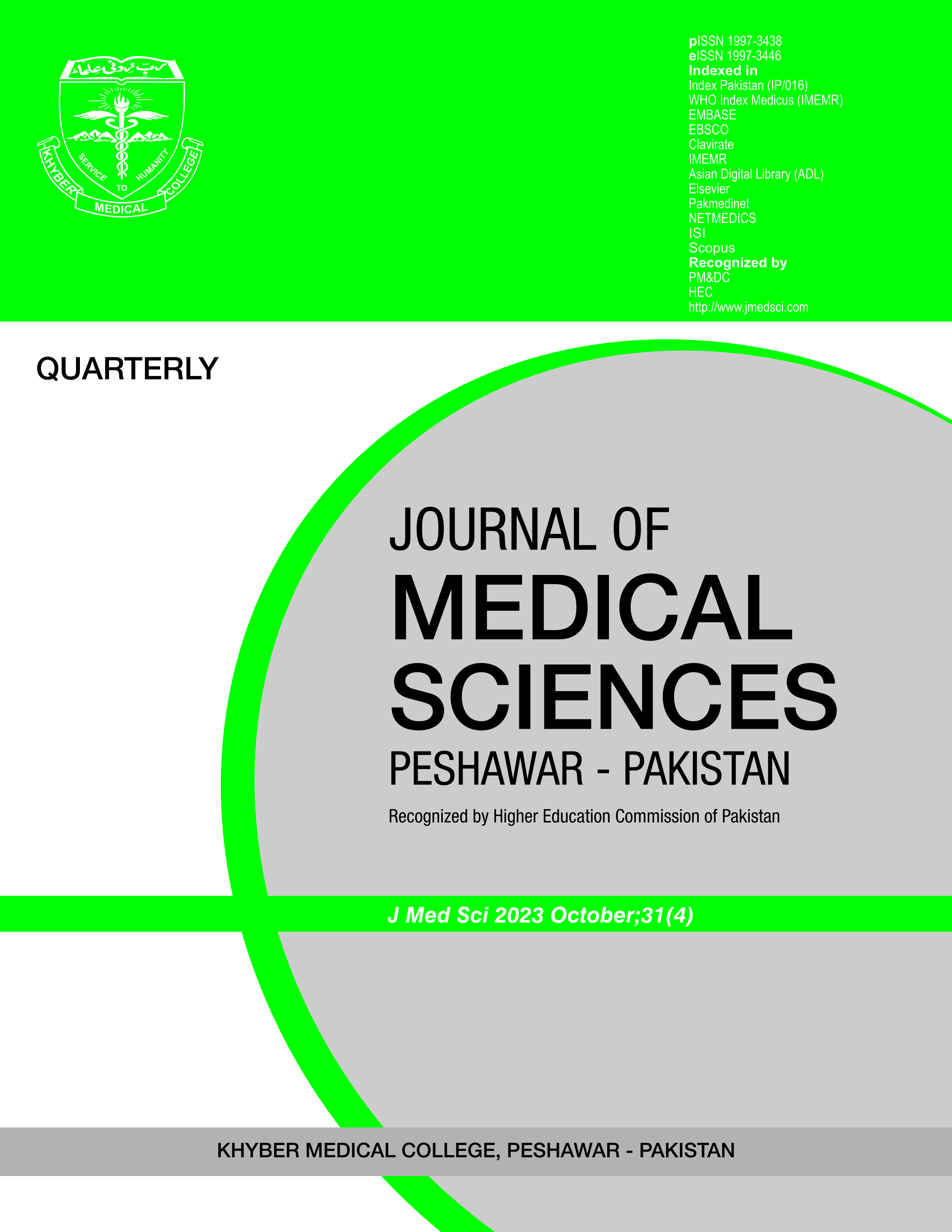COMPARATIVE EFFECTS OF MUSCLE ENERGY TECHNIQUE AND COUNTERSTRAIN TECHNIQUE ON PAIN, FUNCTION STATUS AND SATISFACTION LEVEL IN PLANTER FASCIITIS PATIENTS
Main Article Content
Abstract
Objective: To compare the effects of muscle energy technique and counterstrain technique on pain, functional status and satisfaction level in patients with planter fasciitis.
Methods: This randomized clinical trial was conducted from May to November 2022. Total 66 patients were recruited using purposive sampling technique. Clinically diagnosed patients of plantar fasciitis of age 20-60 years, both gender and history of pain?4 weeks were randomly allocated into two groups. Muscle energy technique was applied to group A and Counterstrain technique was given to Group B with routine physiotherapy. Outcomes measure were Visual Analog Scales for pain, Foot and Ankle Ability Measure for functional level and Patient Satisfaction Questionnaire-18 for satisfaction level. Assessment was conducted at baseline, 1st and 2ndweek. Independent t-test and RM-ANOVA was used for between and within-group differences with p?0.05 was significant.
Results: The results showed no significant difference between Group A and Group B in pain (p=0.245), functional status (ADL: p=0.862, Sport: p=0.092) and satisfaction level (p=0.108). However, significant within-group difference was observed with pain (p=0.000), functional status (p=0.000) and general satisfaction level (p=0.000).
Conclusion: Muscle Energy and Counterstrain Technique are equally beneficial in decreasing pain, enhancing functional status and patient satisfaction level in plantar fasciitis patients.
Keywords: Counterstrain Technique; Functional Status; Foot and ankle ability measure; Muscle energy technique; Pain; Planter fasciitis; Satisfaction Level; Visual analog scale
Article Details

This work is licensed under a Creative Commons Attribution 4.0 International License.
All articles published in the Journal of Medical Sciences (JMS) are licensed under the Creative Commons Attribution 4.0 International License (CC-BY 4.0). Under the CC BY 4.0 license, author(s) retain the ownership of the copyright publishing rights without restrictions for their content, and allow others to copy, use, print, share, modify, and distribute the content of the article even for commercial purposes as long as the original authors and the journal are properly cited. No permission is required from the author/s or the publishers for this purpose. Appropriate attribution can be provided by simply citing the original article. The corresponding author has the right to grant on behalf of all authors, a worldwide license to JMS and its licensees in all forms, formats, and media (whether known now or created in the future), The corresponding author must certify and warrant the authorship and proprietorship and should declare that he/she has not granted or assigned any of the article’s rights to any other person or body.
The corresponding author must compensate the journal for any costs, expenses, or damages that the JMS may incur as a result of any breach of these warranties including any intentional or unintentional errors, omissions, copyright issues, or plagiarism. The editorial office must be notified upon submission if an article contains materials like text, pictures, tables, or graphs from other copyrighted sources. The JMS reserves the right to remove any images, figures, tables, or other content, from any article, whether before or after publication, if concerns are raised about copyright, license, or permissions and the authors are unable to provide documentation confirming that appropriate permissions were obtained for publication of the content in question.





